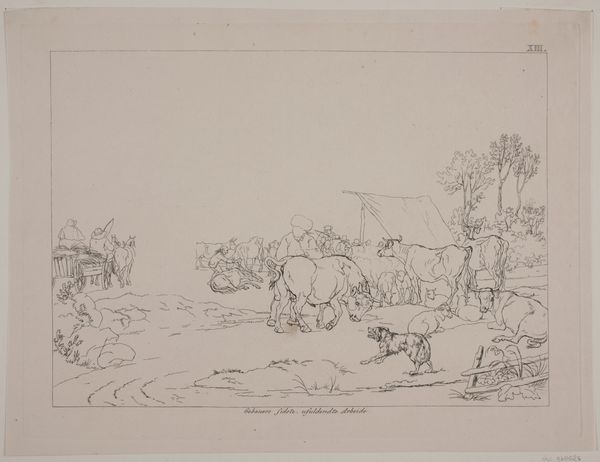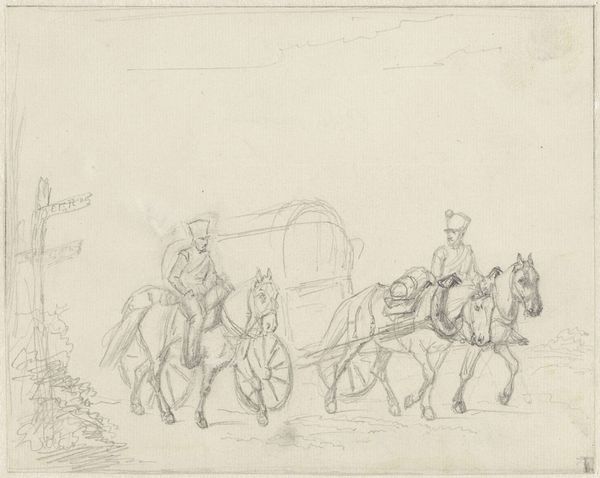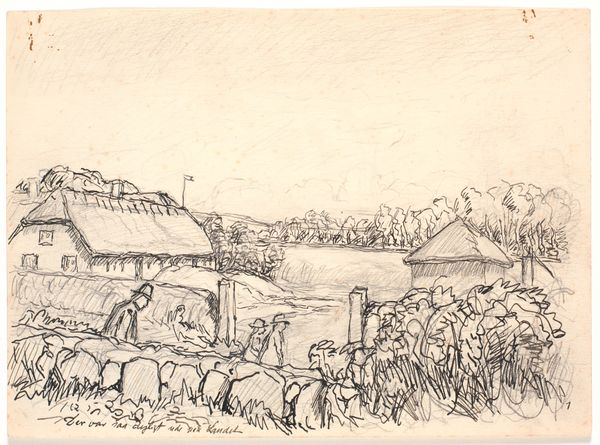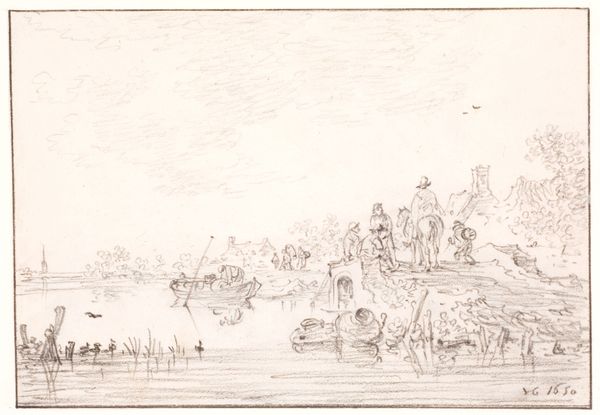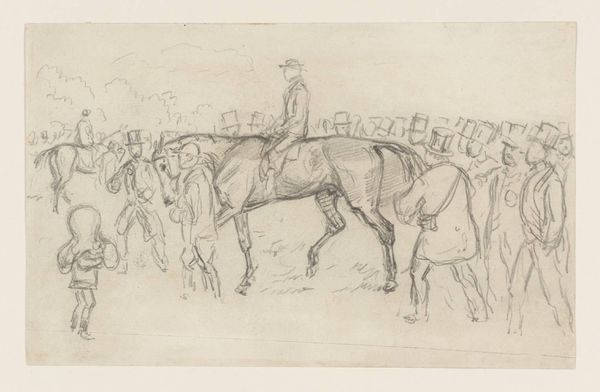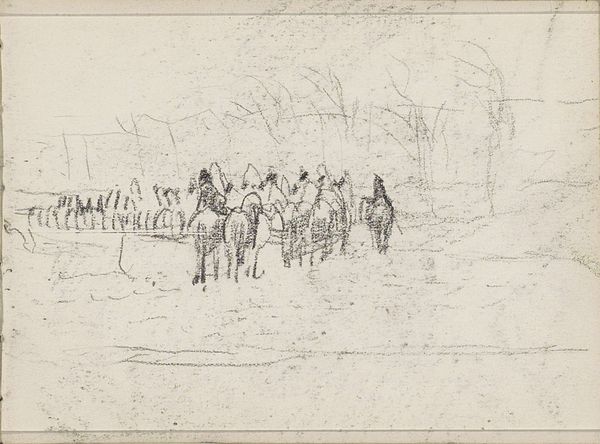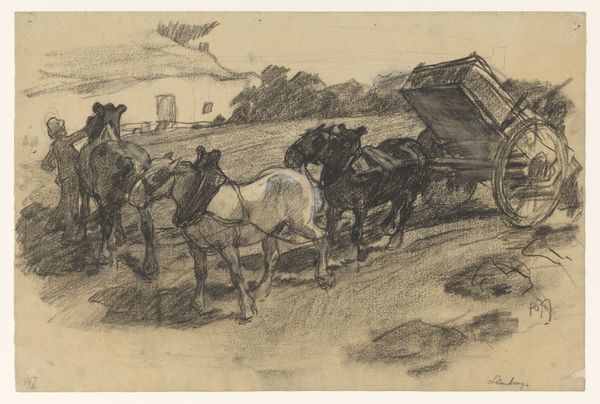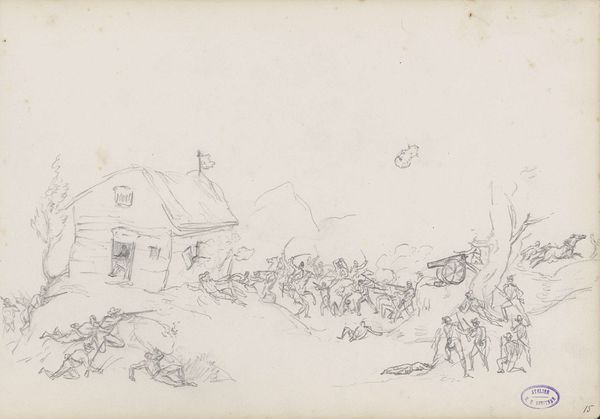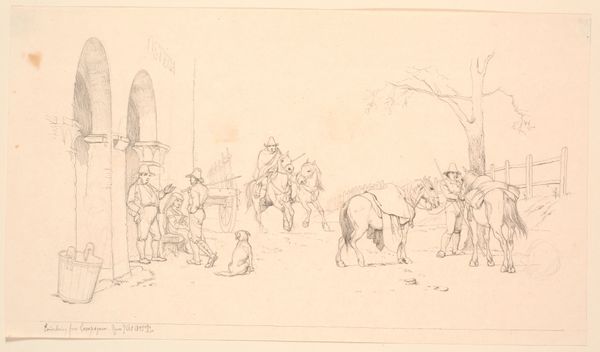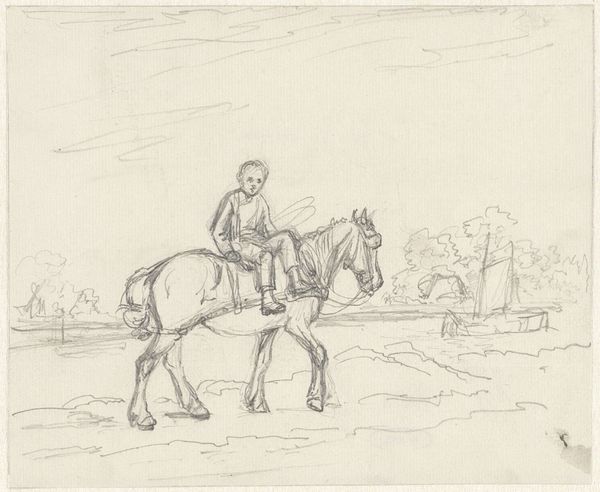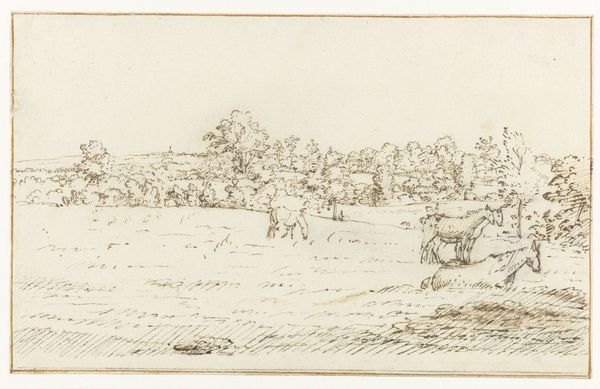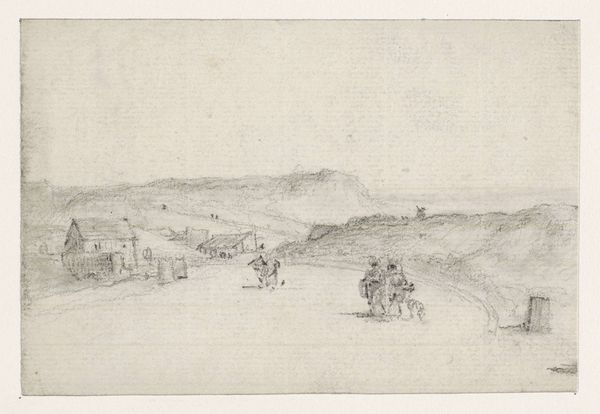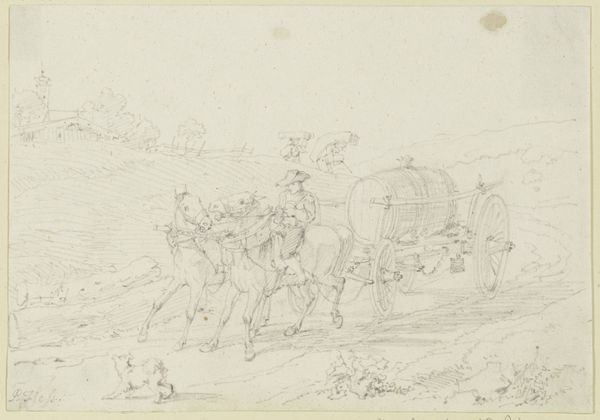
Dimensions: 189 mm (height) x 289 mm (width) (bladmaal)
Editor: Here we have H.W. Bissen’s "A Drove of Oxen in the Roman Campagna" from 1862, rendered in pencil on paper. It's quite delicate, almost understated, given the active scene. What do you make of it? Curator: It's intriguing to consider this work through a materialist lens. Look at the starkness of the pencil. It depicts labor, but almost detaches it from its harsh reality. Consider the social context: the Roman Campagna was a source of both agricultural wealth and disease. Bissen's choice of medium—drawing rather than painting—almost sanitizes that reality. What does that suggest about the intended audience and their relationship to the scene depicted? Editor: So, the very act of using pencil, a less "precious" medium than oils, is a statement itself about labor and consumption, about bringing a raw element of everyday life to an audience perhaps unfamiliar with the grit of it. Curator: Exactly. It avoids elevating labor to the level of high art. Consider, too, how the landscape itself becomes a commodity, both visually and economically. The cattle are being driven; the land is being used. The drawing’s sketch-like quality undermines any idealization of the rural. Are we celebrating this labour, or simply documenting its means? Editor: It really challenges that romanticized view of rural life. The deliberate choice to depict the labor so plainly in this particular medium really brings out the material reality, doesn’t it? Thanks, that's given me a lot to think about. Curator: Indeed, it forces us to question our consumption and our remove from the source of material goods. It shows that labour itself becomes something of aesthetic and even political consumption.
Comments
No comments
Be the first to comment and join the conversation on the ultimate creative platform.
